🚗🏍️ Welcome to Motoshare!
Turning Idle Vehicles into Shared Rides & New Earnings.
Why let your bike or car sit idle when it can earn for you and move someone else forward?
From Idle to Income. From Parked to Purpose.
Earn by Sharing, Ride by Renting.
Where Owners Earn, Riders Move.
Owners Earn. Riders Move. Motoshare Connects.
With Motoshare, every parked vehicle finds a purpose. Partners earn. Renters ride. Everyone wins.
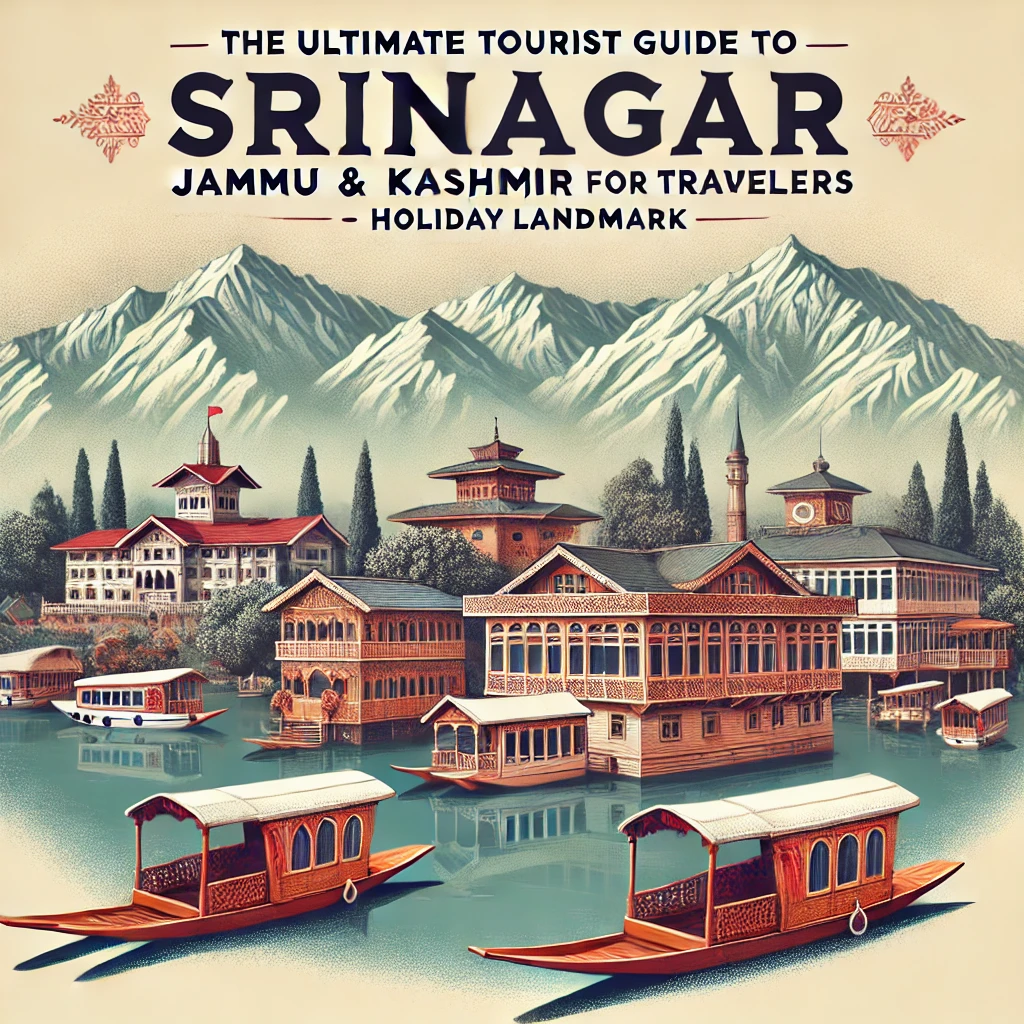
Introduction to Srinagar
Overview of Srinagar’s historical and cultural significance.
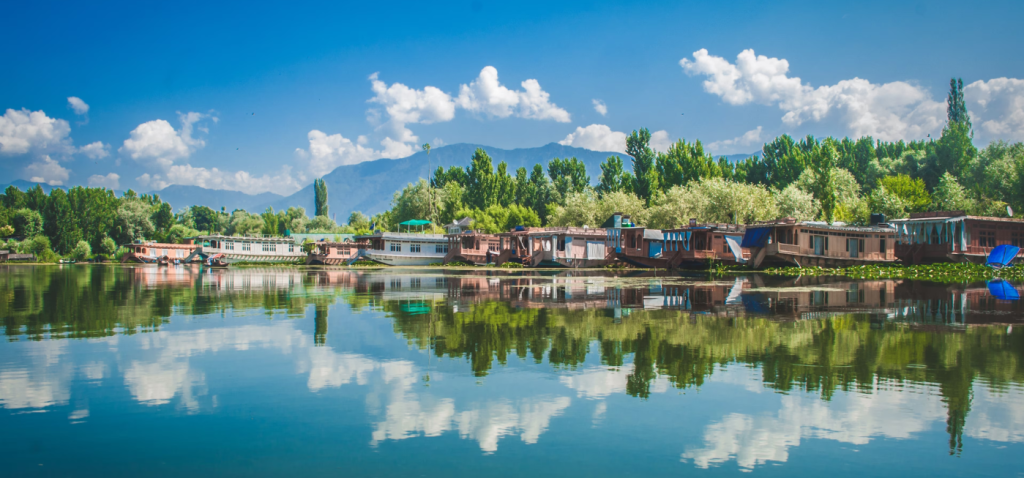
Srinagar, the summer capital of Jammu and Kashmir, holds a pivotal place in the historical and cultural fabric of the region. Founded around the 3rd century BC by King Pravarasena II, Srinagar has been a cherished city due to its strategic location along ancient trade routes. Over centuries, it has been a witness to various dynasties that have left their mark on its culture and architecture, including the Mughals, who adorned the city with beautiful gardens and serene waterways that still enchant visitors today.
Culturally, Srinagar is a melting pot of Hindu and Islamic influences, showcased in its historical monuments, cuisine, and crafts. The city is renowned for its traditional Kashmiri handicrafts such as handwoven pashmina shawls, intricately designed carpets, and the unique Papier-mâché art. Additionally, Srinagar has been the inspiration for countless poets and writers, drawn by the city’s stunning landscapes and the poetic beauty of its landmarks like Dal Lake and its famous houseboats.
General information on the geography and climate.
Geographically, Srinagar is situated in the heart of the Kashmir Valley, flanked by the majestic Himalayas on all sides. The city is renowned for its stunning waterfronts, with the Jhelum River running through it and the iconic Dal and Nigeen lakes enhancing its picturesque beauty.
The climate of Srinagar is predominantly of the temperate type, with four distinct seasons. Winters (December to February) are cold and snowy, making it a perfect time for enjoying the snowfall and winter sports in nearby areas like Gulmarg. Spring (March to early May) sees the valley in bloom with flowers, particularly the famous almond blossoms, offering a spectacular view. Summers (late May to August) are pleasant and warm, ideal for exploring the city and enjoying boat rides on its lakes. Autumn (September to November) transforms the landscape into vibrant shades of orange and red, a sight that has captured the hearts of travelers for generations.
Getting There
Detailed information on reaching Srinagar by air, road, and rail.
| Mode of Transport | Details | Tips |
|---|---|---|
| By Air | Srinagar is served by Sheikh ul-Alam International Airport (Srinagar Airport), approximately 12 kilometers from the city center. Major airlines like Air India, IndiGo, Vistara, and GoAir connect Srinagar to major Indian cities. | – Book flights in advance during peak tourist seasons (April to October). – Keep identification and travel documents handy due to stringent security checks. |
| By Road | Srinagar is accessible via National Highway 44 (NH44) from Jammu (approximately 270 km, 8-10 hours) and NH1D from Leh (approximately 434 km, open May to October). | – Private taxis and shared cabs are available from Jammu. – Check road conditions and weather forecasts, especially in winter due to possible snowfall closures. |
| Bus Services | – JKSRTC operates intra-state buses between Srinagar and major towns. – Private and state transport buses connect Srinagar to neighboring states, including deluxe options from Delhi, Chandigarh, and Jammu. | |
| By Rail | Srinagar is not directly connected by rail; the nearest station is Jammu Tawi Railway Station (about 300 km from Srinagar), with connections to major Indian cities. | – From Jammu Tawi, travel by bus, taxi, or shared cab to Srinagar (approximately 8-10 hours). |
Tips for Travelers
- Plan Ahead: During peak tourist seasons, transportation options can get booked quickly. It is advisable to plan and book your tickets in advance.
- Weather Check: Weather conditions in Srinagar can be unpredictable, especially in winter. Always check the weather forecast and road conditions before traveling.
- Local Transport: Once in Srinagar, local transport options include auto-rickshaws, taxis, and buses for getting around the city and nearby attractions. Houseboats on Dal Lake also offer a unique and popular mode of accommodation and local travel.
- Acclimatization: If traveling from lower altitudes, allow time to acclimatize to Srinagar’s elevation to avoid altitude sickness.
By air, road, or rail, reaching Srinagar is an integral part of the journey to this beautiful city, nestled in the heart of the Kashmir Valley.
Local Transportation
Options for getting around Srinagar, including public transport, private taxis, auto-rickshaws, and shikaras.
Public Transport
Srinagar offers several options for getting around the city, making it convenient for tourists to explore its beauty and attractions.
| Local Transportation | Details | Tips |
|---|---|---|
| Public Buses | Operated by Jammu and Kashmir State Road Transport Corporation (JKSRTC), public buses are an affordable way to travel within Srinagar and nearby areas. They can be crowded during peak hours. | – Check bus routes and schedules in advance. – Be prepared for crowded buses during rush hours. |
| Private Taxis | Private taxis offer flexibility and comfort, allowing exploration at your own pace. They can be hired for full-day or half-day tours. | – Negotiate the fare before starting the journey. – Ask your hotel for trusted taxi operators or use ride-hailing apps if available. |
| Auto-Rickshaws | Auto-rickshaws are economical for short distances, ideal for navigating narrow streets and markets. | – Always negotiate the fare before starting the ride. – Be aware of approximate distances and fares to avoid overcharging. |
| Shikaras | Traditional wooden boats on Dal Lake and Nigeen Lake, shikaras are a quintessential part of the Srinagar experience, offering serene rides to explore the lake, floating markets, and houseboats. | – Negotiate the fare beforehand, and consider a guided tour. – Evening rides offer beautiful sunset views over the lake. |
| Car/Bike Rentals | Renting a car or bike provides the freedom to explore Srinagar and its surroundings at your own pace. | – Check for reliable rental services and inspect vehicles before hiring. – Ensure you have a valid driving license and understand local traffic rules. |
Tips on navigating the city and advice on fares and bargaining.
Navigating the City
- Maps and Guides: Carry a city map or use a GPS-enabled device to navigate the city. Many attractions are well-signposted.
- Local Advice: Ask locals or your hotel staff for directions and recommendations on the best routes and transportation options.
- Walking: Srinagar is a walkable city with many attractions close to each other. Walking can be a pleasant way to explore the city, especially around the markets and old town area.
Advice on Fares and Bargaining
- Negotiation: Always negotiate fares in advance for auto-rickshaws, shikaras, and private taxis. Having an idea of the general rates can help in bargaining.
- Fixed Rates: Some services may have fixed rates for certain destinations or tours. Inquire about these to avoid unnecessary haggling.
- Carry Cash: Many transportation options, especially auto-rickshaws and shikaras, may not accept digital payments. It’s advisable to carry sufficient cash in small denominations.
- Be Polite: While bargaining, maintain a polite and friendly demeanor. Respectful negotiation is often more effective.
Accommodations
- Guide to choosing where to stay: hotels, guesthouses, houseboats, and homestays.
Hotels
| Category | Hotel Name | Description |
|---|---|---|
| Luxury Hotels | The Lalit Grand Palace Srinagar | A luxurious hotel set in a historic palace, offering stunning views, world-class amenities, and exceptional service. |
| Vivanta Dal View | Located on a hilltop with panoramic views of Dal Lake, this hotel offers modern amenities and elegant accommodations. | |
| Mid-Range Hotels | Hotel Dar-Es-Salam | A charming hotel located by Nigeen Lake, known for its traditional Kashmiri architecture and warm hospitality. |
| Comrade Inn | A comfortable mid-range hotel offering modern amenities and a convenient location near major attractions. | |
| Budget Hotels | Hotel New Prince Inn | A budget-friendly option offering clean and comfortable rooms with essential amenities. |
| Hotel Malik Palace | An affordable hotel located near Dal Lake, providing basic amenities and friendly service. |
Guesthouses
Guesthouses in Srinagar provide a homely atmosphere and personalized service, often at a more affordable rate compared to hotels.
Recommended Guesthouses:
- New Shaheen Guest House: Located near Dal Lake, this guesthouse offers comfortable rooms and warm hospitality.
- Lake Victoria Houseboats and Guest House: Combining the charm of a houseboat with the convenience of a guesthouse, this option offers a unique stay experience.
Houseboats
| Category | Houseboat Name | Description |
|---|---|---|
| Luxury Houseboats | Sukoon Houseboat | A luxurious houseboat with elegant interiors, modern amenities, and exceptional service. |
| Mascot Houseboats | Known for their traditional Kashmiri decor and comfortable accommodations, these houseboats provide a memorable stay. | |
| Mid-Range Houseboats | WelcomHeritage Gurkha Houseboats | Offering a blend of traditional charm and modern comfort, these houseboats are ideal for a mid-range budget. |
| New Jacquline Heritage Houseboats | Located on Nigeen Lake, these houseboats provide a tranquil environment and good amenities. | |
| Budget Houseboats | New Retreet Houseboats | A budget-friendly option offering basic amenities and a peaceful setting on Dal Lake. |
| Houseboat New Heaven | Affordable houseboat accommodations with friendly service and beautiful lake views. |
Homestays
Homestays provide an opportunity to experience Kashmiri culture and hospitality up close. They offer a more intimate and personalized stay compared to hotels.
Recommended Homestays:
- Kashmir Home Stay: Located in the heart of Srinagar, this homestay offers comfortable rooms and a warm, welcoming atmosphere.
- Sunny’s Homestay: A cozy homestay near Dal Lake, known for its friendly hosts and comfortable accommodations.
Best Areas to Stay for Tourists
- Dal Lake: Staying near Dal Lake offers easy access to shikara rides, houseboats, and stunning lake views. It’s a central location for exploring Srinagar’s attractions.
- Nigeen Lake: Quieter than Dal Lake, Nigeen Lake is ideal for those seeking a peaceful environment while still being close to the city’s main attractions.
- Boulevard Road: This area along Dal Lake is lined with hotels, restaurants, and shops, making it a convenient location for tourists.
- Lal Chowk: The commercial hub of Srinagar, Lal Chowk offers numerous accommodation options and is close to markets and eateries.
Tips for Choosing Accommodations
- Book in Advance: Especially during peak tourist seasons (April to October), it’s advisable to book your accommodation well in advance to secure the best options.
- Read Reviews: Check online reviews and ratings to get an idea of the quality and service of the accommodation.
- Check Amenities: Ensure that the accommodation offers the amenities you need, such as Wi-Fi, heating, and travel assistance.
- Consider Location: Choose a location that is convenient for the attractions and activities you plan to explore.
Top Attractions
Top Attractions in Srinagar
Must-Visit Places
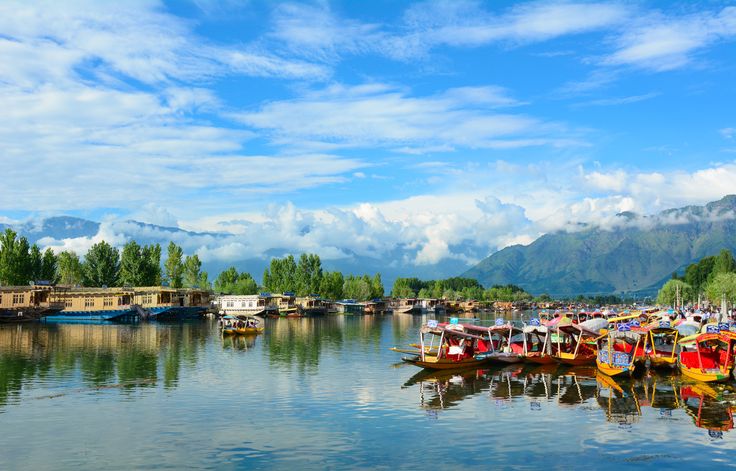
Dal Lake: Known as the “Jewel in the Crown of Kashmir,” Dal Lake is famous for its houseboats, shikaras, and stunning views. Visitors can enjoy boat rides, explore the floating gardens, and shop at the vibrant markets on the lake.
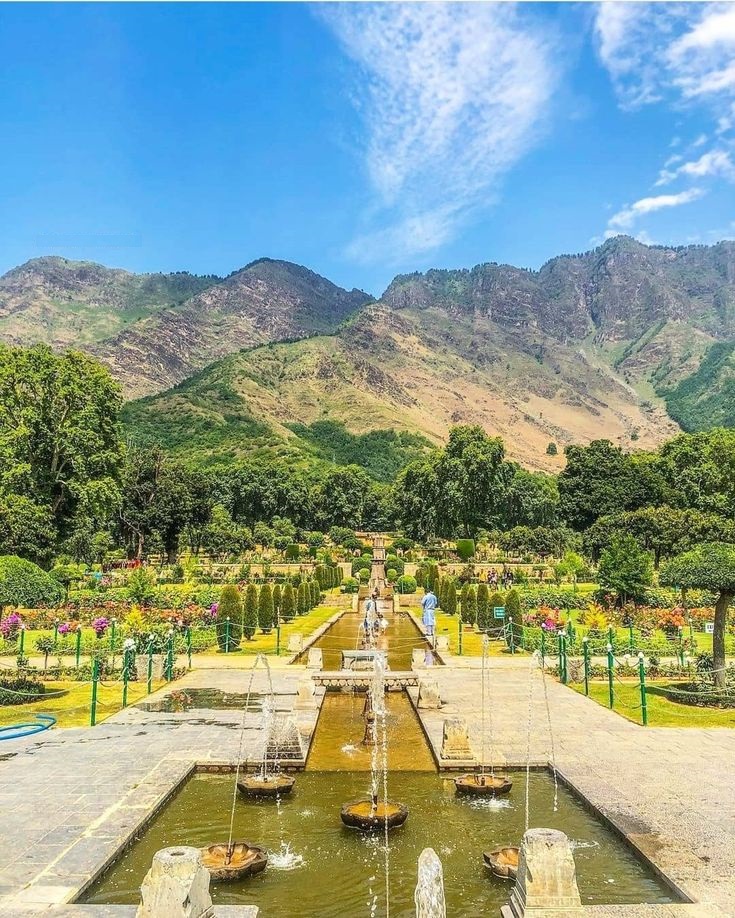
Nishat Bagh: Nishat Bagh is a beautiful Mughal garden located on the eastern side of Dal Lake. It features terraced lawns, cascading fountains, and flower beds, offering panoramic views of the lake and the surrounding mountains.
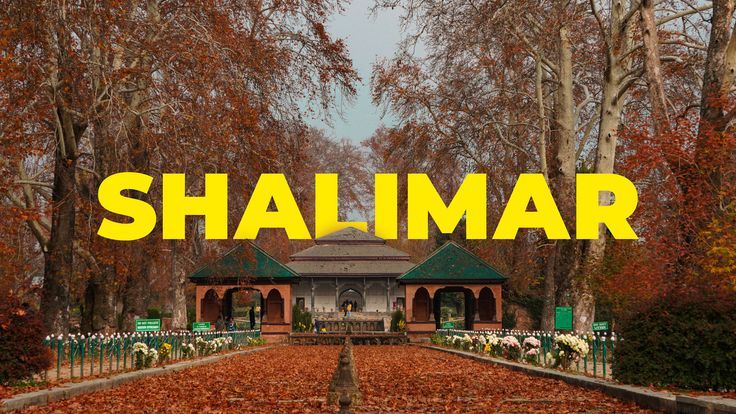
Shalimar Bagh: Shalimar Bagh, also known as the “Garden of Love,” is another exquisite Mughal garden built by Emperor Jahangir for his wife, Nur Jahan. The garden is known for its Chinar trees, water channels, and stunning architecture.
Old City: The Old City of Srinagar, also known as Downtown, is a treasure trove of historic sites, traditional markets, and old mosques. Key attractions include:
- Jamia Masjid: A grand mosque with stunning Indo-Saracenic architecture.
- Shah-e-Hamdan: A historic mosque with intricate woodwork and Persian designs.
- Zaina Kadal: A bustling market area known for traditional crafts and local goods.
Hidden Gems and Lesser-Known Sites
Dachigam National Park: Located about 22 kilometers from Srinagar, Dachigam National Park is known for its rich biodiversity and scenic landscapes. It is home to the endangered Hangul deer, also known as the Kashmir stag. The park offers opportunities for wildlife spotting, bird watching, and nature walks.
Pari Mahal: Pari Mahal, or the “Palace of Fairies,” is a historic monument and terraced garden situated on the Zabarwan mountain range overlooking Dal Lake. Built by Dara Shikoh, the Mughal Prince, this site offers panoramic views of the lake and the surrounding mountains, making it a perfect spot for photography and relaxation.
Chashme Shahi: Chashme Shahi is a small yet charming Mughal garden known for its natural spring and beautiful layout. The garden was commissioned by the Mughal Emperor Shah Jahan in 1632 and features terraced lawns, fountains, and colorful flower beds. It is an ideal spot for a peaceful stroll and enjoying the serene environment.
Tips for Exploring
- Timing: Early morning and late afternoon are the best times to visit these attractions to avoid the crowds and enjoy pleasant weather.
- Guided Tours: Consider hiring a local guide to gain deeper insights into the history and cultural significance of these sites.
- Photography: Always ask for permission before taking photos, especially in religious and sensitive areas.
- Respect Local Customs: Dress modestly and follow local customs and etiquettes while visiting historical and cultural sites.
Activities
- Information on unique activities like shikara rides, houseboat stays, and visits to saffron fields.
Shikara Rides: One of the most iconic experiences in Srinagar is a shikara ride on Dal Lake or Nigeen Lake. These traditional wooden boats offer a serene way to explore the beauty of the lake, floating gardens, and vibrant houseboats. Shikara rides are perfect for sightseeing, photography, or simply relaxing amidst the tranquil waters.
Houseboat Stays: Staying on a houseboat is a quintessential Srinagar experience. These luxurious and beautifully crafted wooden boats are moored on Dal Lake and Nigeen Lake. Houseboats offer all the comforts of a hotel with the added charm of being on water, providing a unique and memorable stay. Enjoy the picturesque views, traditional Kashmiri hospitality, and delicious local cuisine.
Visits to Saffron Fields: Kashmir is renowned for its saffron fields, primarily located in Pampore, about 15 kilometers from Srinagar. Visiting these fields during the saffron harvest season (late October to early November) is a delightful experience. Witness the vibrant saffron flowers in bloom, learn about the harvesting process, and purchase high-quality saffron directly from local farmers.
Trekking: Srinagar serves as a gateway to numerous trekking routes in the Kashmir Valley. Popular treks include:
- Great Lakes Trek: A scenic trek that takes you through alpine meadows, pristine lakes, and stunning mountain landscapes.
- Tarsar Marsar Trek: Known for its beautiful twin lakes, this trek offers breathtaking views and a chance to explore the remote wilderness.
Skiing: The nearby hill station of Gulmarg, about 50 kilometers from Srinagar, is a renowned destination for skiing and winter sports. With its powdery snow, modern ski lifts, and excellent slopes, Gulmarg attracts skiing enthusiasts from around the world. The skiing season typically lasts from December to March.
Golfing: Srinagar boasts some of the most scenic golf courses in India, offering a unique golfing experience amidst the stunning Himalayan backdrop. Notable golf courses include:
- Royal Springs Golf Course: Designed by the renowned golf course architect Robert Trent Jones Jr., this course is set against the backdrop of the Zabarwan Mountains and Dal Lake.
- Gulmarg Golf Course: Located in Gulmarg, this high-altitude golf course offers a challenging game with breathtaking views of the surrounding mountains and meadows.
River Rafting: For adventure seekers, river rafting on the Lidder River in Pahalgam, about 90 kilometers from Srinagar, is a thrilling experience. The river offers rapids of varying difficulty levels, making it suitable for both beginners and experienced rafters. The best time for rafting is from April to September when the water levels are ideal.
Tips for Activities
- Booking in Advance: For popular activities like shikara rides and houseboat stays, it’s advisable to book in advance, especially during peak tourist seasons.
- Guided Tours: Consider hiring certified guides for trekking and skiing to ensure safety and a more informative experience.
- Safety Precautions: Always follow safety guidelines and use appropriate gear for adventure sports. Check weather conditions and be aware of any local advisories before planning your activities.
- Local Insights: Engage with locals to gain insights and recommendations for the best experiences and hidden gems in Srinagar.
Local Cuisine
Highlights of Kashmiri Dishes and Beverages
Rogan Josh: A signature Kashmiri dish, Rogan Josh is a flavorful curry made with tender lamb cooked in a rich gravy of yogurt, garlic, and aromatic spices. The dish is known for its vibrant red color, which comes from Kashmiri red chilies and saffron.
Gushtaba: Often referred to as the “Dish of Kings,” Gushtaba is a delicacy made from minced mutton meatballs cooked in a creamy yogurt-based gravy. It is traditionally served on special occasions and is a must-try for meat lovers.
Yakhni: A yogurt-based mutton curry, Yakhni is known for its subtle flavors and fragrant spices like fennel and cardamom. It is typically served with steamed rice.
Dum Aloo: A vegetarian favorite, Dum Aloo features potatoes cooked in a spicy, tangy gravy made with yogurt and a blend of Kashmiri spices. The dish is slow-cooked to perfection, allowing the flavors to meld beautifully.
Haak: A simple yet flavorful dish, Haak is made from collard greens cooked with mustard oil, dried red chilies, and garlic. It is a staple in Kashmiri households and pairs well with steamed rice.
Kahwa: Kahwa is a traditional Kashmiri green tea brewed with saffron, cardamom, cinnamon, and almonds. This fragrant and soothing beverage is perfect for warming up on a chilly day and is often served with a hint of honey.
Phirni: A popular dessert in Kashmir, Phirni is a creamy rice pudding flavored with cardamom and garnished with nuts and saffron. It is typically served chilled in clay pots.
Recommendations on Where to Eat
1.Best Local Eateries
Ahdoos Restaurant: One of the oldest and most renowned restaurants in Srinagar, Ahdoos offers an extensive menu of authentic Kashmiri dishes. Their Rogan Josh, Gushtaba, and Yakhni are highly recommended.
Mughal Darbar: Known for its traditional Wazwan cuisine, Mughal Darbar is a great place to try a variety of Kashmiri dishes. Don’t miss their Dum Aloo and Rogan Josh.
Shamyana Restaurant: Located on Boulevard Road near Dal Lake, Shamyana offers a delightful dining experience with a range of Kashmiri and North Indian dishes. Their Kahwa and Yakhni are particularly popular.
2. Fine Dining Options
The Chinar at The Lalit Grand Palace: For a luxurious dining experience, visit The Chinar at The Lalit Grand Palace. The restaurant offers a refined menu featuring Kashmiri delicacies like Rogan Josh, Gushtaba, and Phirni, along with stunning views of the palace gardens.
Latitude at Vivanta Dal View: This elegant restaurant offers a mix of traditional Kashmiri and contemporary dishes. Enjoy their Dum Aloo, Yakhni, and Kahwa while taking in the panoramic views of Dal Lake.
Nedous Dining Room: Located in Nedous Hotel, this dining room offers an upscale yet cozy ambiance. Their menu includes a variety of Kashmiri dishes, and the Gushtaba is a standout.
3 What Meals to Try
- Rogan Josh: A rich and flavorful lamb curry that is a staple in Kashmiri cuisine.
- Gushtaba: Minced mutton meatballs in a creamy yogurt-based gravy, traditionally served on special occasions.
- Yakhni: A subtle and aromatic yogurt-based mutton curry.
- Dum Aloo: Spicy, tangy potatoes slow-cooked in a yogurt-based gravy.
- Haak: Simple collard greens cooked with mustard oil and spices.
- Kahwa: Traditional Kashmiri green tea brewed with saffron, cardamom, and almonds.
- Phirni: A creamy rice pudding flavored with cardamom and garnished with nuts and saffron.
4. Tips for Dining in Srinagar
- Local Specialties: Always ask for local specialties and seasonal dishes to get the most authentic experience.
- Street Food: While fine dining offers a luxurious experience, don’t miss out on the vibrant street food scene. Try local snacks like Modur Pulao (sweet rice), Kashmiri Kulcha (bread), and Seekh Kebabs.
- Hygiene: Choose clean and reputable eateries to ensure a safe and pleasant dining experience.
- Reservation: For popular restaurants and fine dining options, especially during peak tourist seasons, it is advisable to make reservations in advance.
Shopping
Best Markets and What to Buy
Lal Chowk: Lal Chowk is the commercial hub of Srinagar, bustling with shops and markets. Here, you can find a variety of products ranging from traditional handicrafts to modern goods. It is a great place to shop for:
- Pashmina Shawls: Known for their softness and warmth, authentic Pashmina shawls are a prized possession. Look for genuine hand-woven shawls with intricate embroidery.
- Carpets: Kashmiri carpets are renowned for their quality and intricate designs. Available in silk and wool, these carpets are often hand-knotted and can be quite expensive.
- Papier-mâché Items: Beautifully decorated with colorful motifs, papier-mâché items include vases, boxes, and ornaments. They make for unique souvenirs.
- Walnut Wood Carvings: Kashmir is famous for its walnut wood carvings. From furniture to decorative items, the intricate craftsmanship on these pieces is remarkable.
Residency Road: Residency Road is another popular shopping area in Srinagar. It is known for its wide range of shops offering traditional Kashmiri products. Key items to buy here include:
- Kashmiri Saffron: Known as one of the best saffrons in the world, Kashmiri saffron is a must-buy. Ensure you purchase it from a reputable store to avoid adulteration.
- Dry Fruits: Kashmir is famous for its dry fruits, including almonds, walnuts, and dried apricots. These make for excellent gifts and personal consumption.
- Spices: Besides saffron, you can buy a variety of other spices like Kashmiri chili powder and dried herbs.
Polo View Market: Polo View Market is a charming shopping area where you can find a variety of Kashmiri handicrafts and textiles. Items to look for include:
- Shawls and Stoles: Besides Pashmina, you can find shawls made of wool and silk, often adorned with traditional Kashmiri embroidery.
- Jewelry: Look for traditional Kashmiri jewelry, including silver ornaments and pieces adorned with precious and semi-precious stones.
Tibetan Market: Located near Boulevard Road, the Tibetan Market is a great place to shop for:
- Tibetan Handicrafts: Items include traditional Tibetan jewelry, woolen garments, and prayer flags.
- Souvenirs: This market is perfect for picking up unique souvenirs and gifts.
Kashmir Government Arts Emporium: For authentic and high-quality handicrafts, visit the Kashmir Government Arts Emporium. This state-run store offers a wide range of products, including:
- Handicrafts: Pashmina shawls, carpets, papier-mâché items, and walnut wood carvings.
- Textiles: A variety of traditional Kashmiri textiles, including embroidered fabrics and rugs.
Tips on Bargaining and Best Shopping Practices
Bargaining:
- Negotiate: Bargaining is common in most markets in Srinagar. Start by offering a price lower than the asking price and negotiate until you reach a mutually acceptable amount.
- Stay Polite: Bargain respectfully and maintain a friendly demeanor. Politeness can often lead to better deals.
- Know the Value: Have a rough idea of the prices for the items you are interested in to avoid overpaying.
Best Practices:
- Check Quality: Ensure the quality of the items you are purchasing. For textiles like Pashmina shawls, check for softness and authenticity.
- Ask for Certification: For high-value items like saffron and Pashmina, ask for certification to ensure authenticity.
- Cash Transactions: Many small shops may not accept cards, so it’s advisable to carry enough cash, especially in smaller denominations.
- Support Local Artisans: Purchase directly from local artisans or reputable stores to support the local economy and get genuine products.
- Avoid Peak Hours: Markets can get crowded, especially in the evenings. Visit during the morning or early afternoon for a more comfortable shopping experience.
- Secure Your Belongings: Keep an eye on your belongings and be cautious of pickpockets, especially in crowded areas.
Cultural Insights
Local Festivals, Customs, and Traditions
Local Festivals:
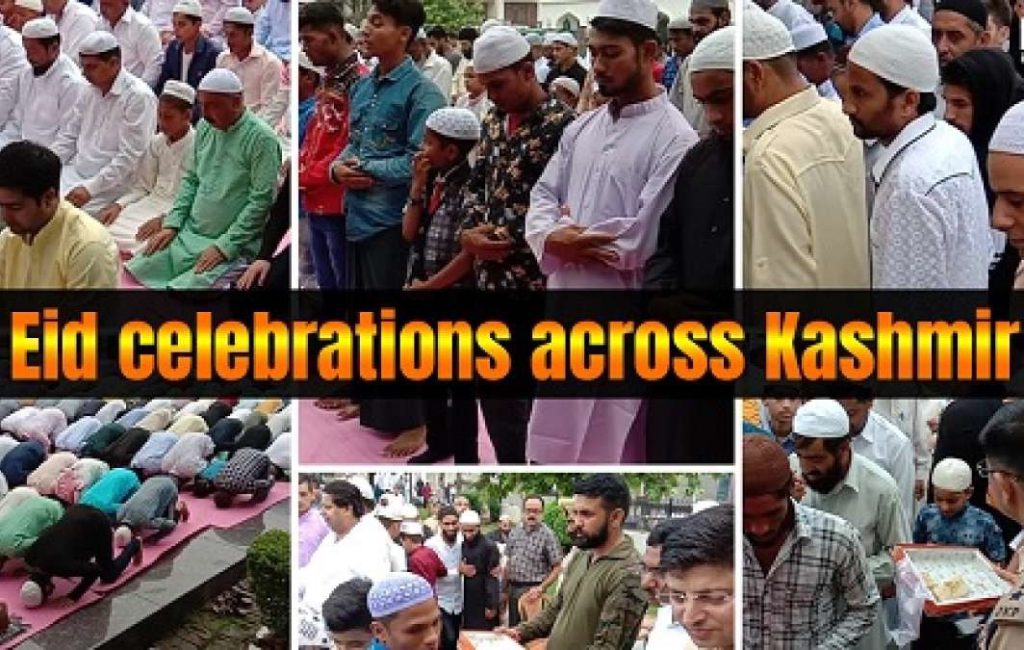
1. Eid-ul-Fitr and Eid-ul-Adha: Eid-ul-Fitr marks the end of Ramadan, the holy month of fasting, while Eid-ul-Adha, also known as the Festival of Sacrifice, commemorates the willingness of Ibrahim (Abraham) to sacrifice his son as an act of obedience to God. These festivals are celebrated with prayers, feasting, and community gatherings.
2. Navroz: Navroz, the Persian New Year, is celebrated by the Shia Muslim community in Srinagar. It marks the arrival of spring and includes special prayers, feasting, and cultural performances.
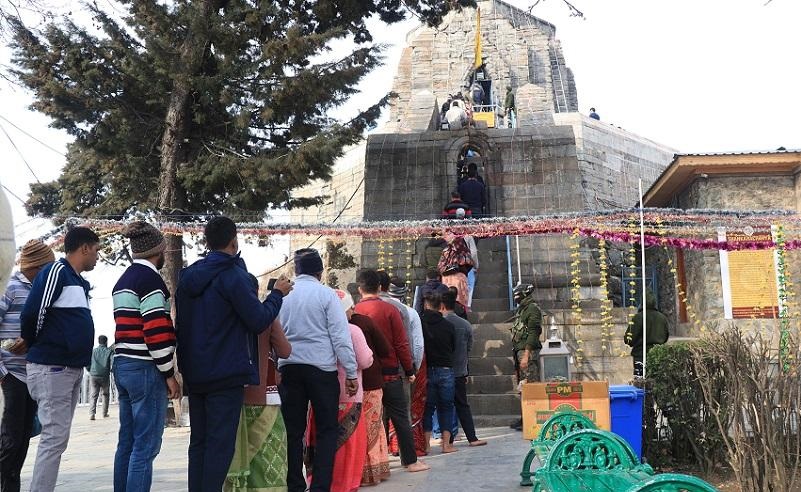
3. Shivratri: Known locally as Herath, Shivratri is a significant festival for Kashmiri Pandits. It involves special prayers, fasting, and rituals dedicated to Lord Shiva.
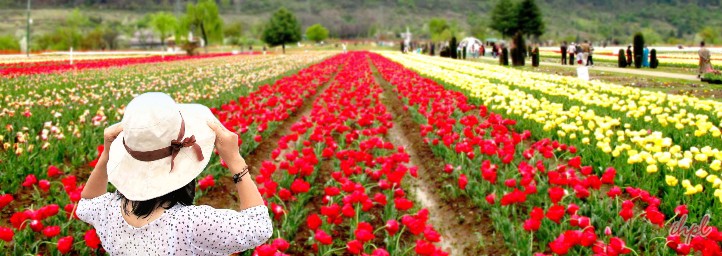
4. Tulip Festival: Held in the Indira Gandhi Memorial Tulip Garden, this festival showcases a spectacular display of tulips in full bloom, attracting tourists and locals alike. The festival celebrates the arrival of spring with cultural programs, music, and food stalls.
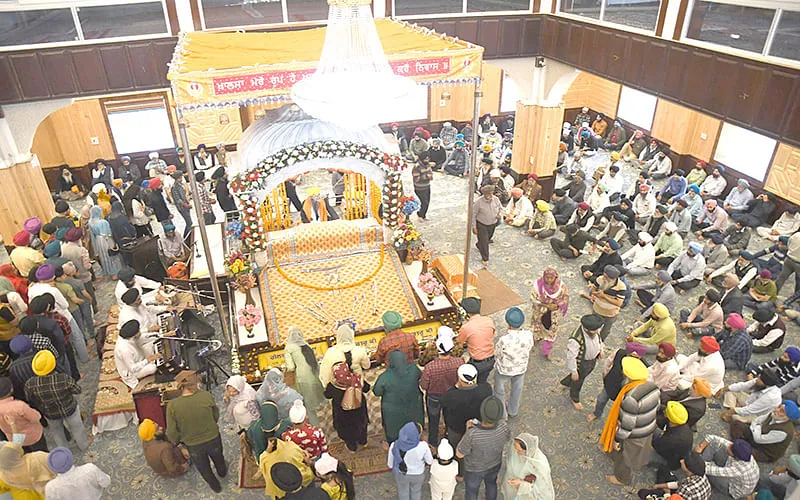
5. Baisakhi: Baisakhi is a harvest festival celebrated by the Sikh and Hindu communities. It marks the beginning of the new harvest season and is celebrated with music, dance, and fairs.
Customs and Traditions:
1. Wazwan: Wazwan is a traditional multi-course meal in Kashmiri cuisine, often served at weddings and special occasions. It includes a variety of meat dishes like Rogan Josh, Gushtaba, and Yakhni, showcasing the rich culinary heritage of Kashmir.
2. Hospitality: Kashmiris are known for their warm hospitality. Guests are treated with great respect and offered the best of food and comfort. It is customary to greet visitors with a cup of Kahwa (traditional green tea).
3. Traditional Attire: Men typically wear a pheran, a loose woolen garment, while women wear colorful pherans adorned with intricate embroidery. Women also wear traditional jewelry, including Dejhoor, a gold ornament worn by married women.
4. Handicrafts: Kashmiri handicrafts are renowned for their craftsmanship. Items like Pashmina shawls, carpets, papier-mâché products, and walnut wood carvings are integral to the local culture and economy.
Dos and Don’ts Regarding Local Etiquette
Dos:
1. Respect Religious Places:
- Remove your shoes before entering mosques, shrines, and temples.
- Dress modestly, covering your arms and legs, especially when visiting religious sites.
- Maintain silence and show reverence during prayers and rituals.
2. Show Courtesy:
- Greet people with “As-Salaam-Alaikum” (Peace be upon you) or the simpler “Salaam.”
- Accept invitations to tea or meals, as refusing can be considered impolite.
- Use both hands or the right hand alone when giving or receiving items.
3. Respect Local Customs:
- Learn and use a few basic phrases in Kashmiri or Urdu to show respect and willingness to connect with locals.
- Participate in local customs and traditions if invited, as it fosters goodwill and cultural exchange.
Don’ts:
1. Avoid Public Displays of Affection:
- Public displays of affection are generally frowned upon and should be avoided.
2. Photography Sensitivity:
- Do not take photos of people, especially women, without their permission.
- Avoid photographing military installations, checkpoints, and sensitive areas.
3. Alcohol Consumption:
- Refrain from consuming alcohol in public places as it is not culturally acceptable.
4. Avoid Discussions on Sensitive Topics:
- Steer clear of sensitive topics like politics and religion in casual conversations to avoid offending locals.
Day Trips and Excursions from Srinagar
1. Gulmarg
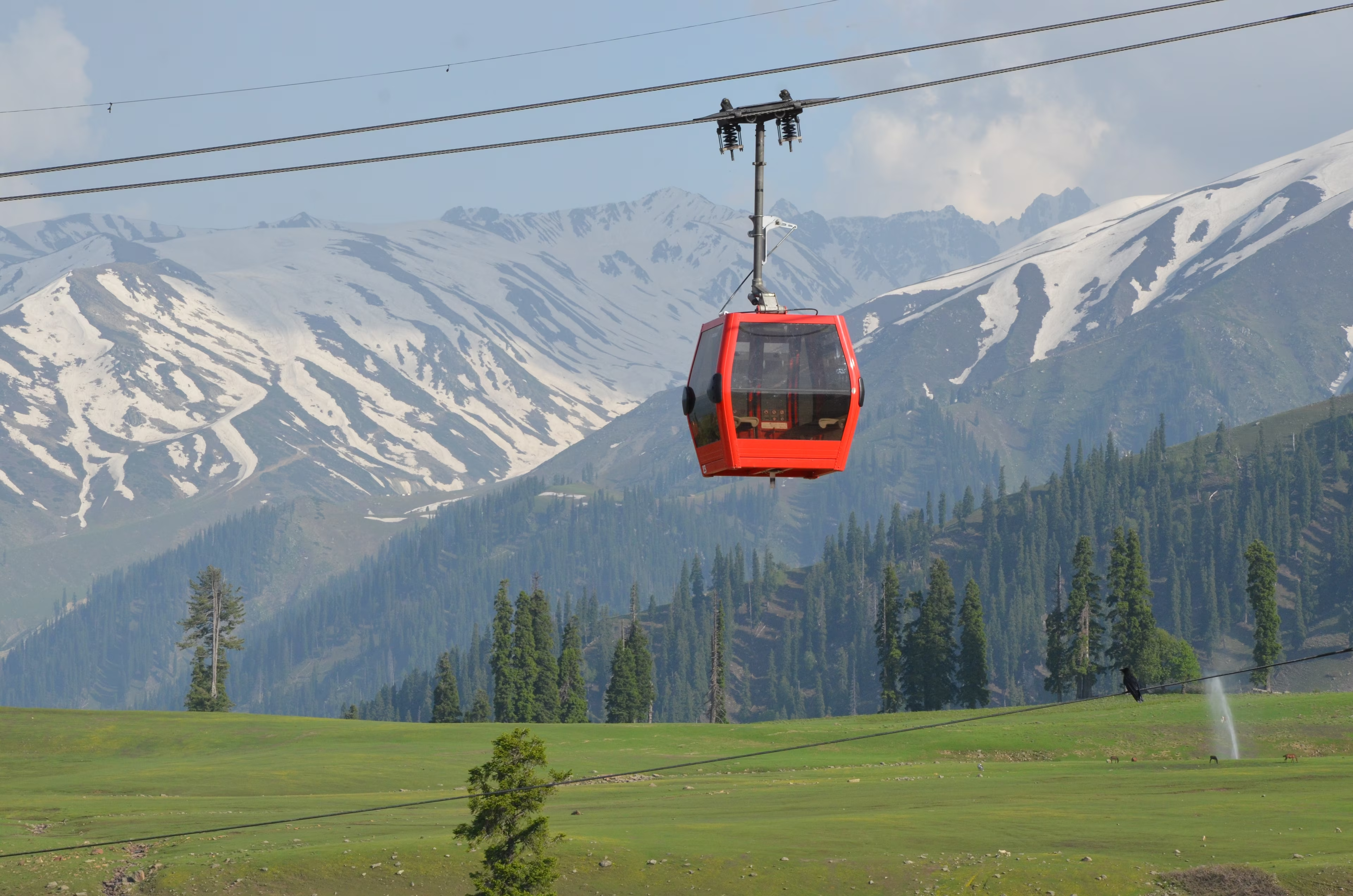
Distance from Srinagar: Approximately 50 kilometers (1.5 to 2 hours by road)
Highlights:
- Gondola Ride: Experience one of the highest cable cars in the world, offering stunning views of the snow-capped mountains and lush meadows.
- Skiing: A renowned skiing destination, Gulmarg offers excellent slopes and powdery snow during the winter months (December to March).
- Golfing: Play a round at the Gulmarg Golf Course, one of the highest golf courses in the world, set against breathtaking mountain scenery.
- Khilanmarg: A beautiful meadow accessible by a short trek or pony ride, offering panoramic views of the surrounding peaks.
How to Organize:
- Transport: Hire a private taxi or take a shared cab from Srinagar. Many travel agencies in Srinagar offer day trip packages to Gulmarg.
- Best Time to Visit: Summer (May to September) for pleasant weather and winter (December to March) for skiing.
- What to Expect: A day filled with adventure, stunning landscapes, and outdoor activities. Carry warm clothing if visiting in winter.
2. Pahalgam
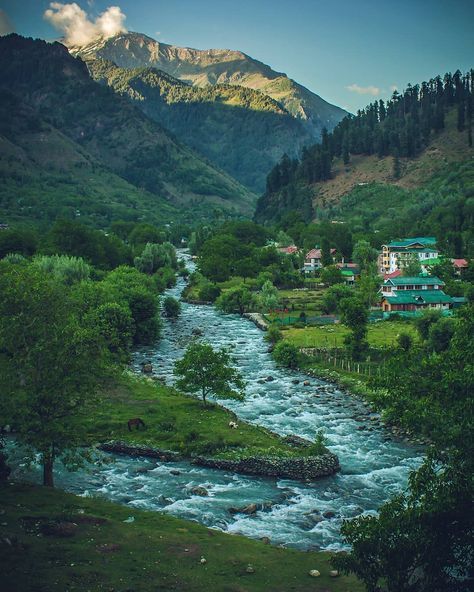
Distance from Srinagar: Approximately 90 kilometers (2 to 3 hours by road)
Highlights:
- Betaab Valley: Named after the Bollywood movie “Betaab,” this picturesque valley is known for its lush greenery, clear streams, and stunning mountain views.
- Aru Valley: A serene valley located about 12 kilometers from Pahalgam, perfect for trekking, camping, and enjoying nature.
- Lidder River: Offers opportunities for trout fishing, picnicking, and leisurely walks along its banks.
- Baisaran (Mini Switzerland): A beautiful meadow with panoramic views of the surrounding mountains, accessible by pony ride from Pahalgam.
How to Organize:
- Transport: Hire a private taxi or take a shared cab from Srinagar. Several travel agencies offer day trip packages to Pahalgam.
- Best Time to Visit: Summer (April to June) and autumn (September to November) for pleasant weather and scenic beauty.
- What to Expect: A day of exploring picturesque valleys, enjoying outdoor activities, and soaking in the natural beauty. Wear comfortable walking shoes and carry a camera.
3. Sonamarg
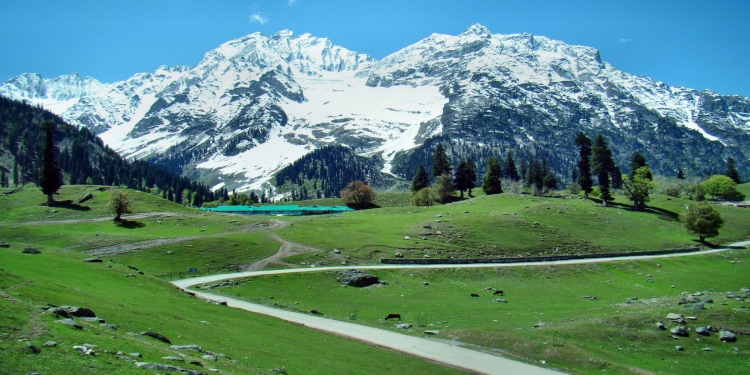
Distance from Srinagar: Approximately 80 kilometers (2 to 3 hours by road)
Highlights:
- Thajiwas Glacier: A major attraction in Sonamarg, accessible by a short trek or pony ride. The glacier offers stunning views and opportunities for snow activities.
- Zero Point: Located at an altitude of 3,500 meters, Zero Point offers breathtaking views of the snow-covered landscape. It is reachable by a short trek or pony ride.
- River Rafting: The Sindh River in Sonamarg provides excellent opportunities for white-water rafting.
- Hiking and Trekking: Numerous trekking trails start from Sonamarg, leading to beautiful lakes and high-altitude meadows.
How to Organize:
- Transport: Hire a private taxi or take a shared cab from Srinagar. Day trip packages to Sonamarg are available through local travel agencies.
- Best Time to Visit: Summer (May to September) for pleasant weather and clear views. Roads to Sonamarg are usually closed in winter due to heavy snowfall.
- What to Expect: A day of adventure, stunning mountain views, and exploring glaciers. Wear warm clothing and comfortable walking shoes.
General Tips for Organizing Day Trips
- Plan Ahead: Check the weather forecast and road conditions before planning your trip.
- Hire a Reliable Taxi: Ensure you hire a reliable taxi or book through a reputable travel agency to avoid any hassles.
- Pack Essentials: Carry water, snacks, sunscreen, sunglasses, and a hat. If visiting in winter, pack warm clothing and gloves.
- Start Early: Start your trip early in the morning to make the most of your day and avoid traffic delays.
- Local Guides: Consider hiring a local guide for a more informative and enriching experience.
Safety and Travel Tips
Current Travel Advisories
Before traveling to Srinagar, Jammu and Kashmir, check the latest travel advisories from reliable sources:
- U.S. Department of State: India Travel Advisory
- UK Foreign, Commonwealth & Development Office (FCDO): India Travel Advice
- Government of Canada: India Travel Advice and Advisories
- Australian Government Department of Foreign Affairs and Trade (DFAT): Smartraveller India
General Safety Tips
- Stay Updated: Regularly check for updates on the security situation in Srinagar.
- Travel Insurance: Ensure you have comprehensive travel insurance covering health, accidents, and travel disruptions.
- Secure Documents: Keep your passport, visa, and other important documents safe and have photocopies available.
- Local Guidance: Follow advice from local authorities and your hotel regarding safe areas to visit.
- Avoid Large Gatherings: Steer clear of protests, demonstrations, or any large gatherings which may become volatile.
- Dress Modestly: Respect local customs and dress modestly, especially when visiting religious sites.
- Health Precautions: Be aware of altitude sickness and have necessary medications with you.
- Transportation: Use registered taxis or hotel-recommended transportation services.
Emergency Contacts in Srinagar
- Police: Dial 100
- Ambulance: Dial 102
- Fire Brigade: Dial 101
- Women Helpline: 1091
Nearest Hospitals
- Sher-i-Kashmir Institute of Medical Sciences (SKIMS):
- Location: Soura, Srinagar
- Contact: +91 194 240 1013
- Government Medical College and Hospital:
- Location: Karan Nagar, Srinagar
- Contact: +91 194 250 4114
- SMHS (Shri Maharaja Hari Singh) Hospital:
- Location: Karan Nagar, Srinagar
- Contact: +91 194 247 7591
Nearest Consulates and Embassies
While Srinagar does not host foreign embassies or consulates, the nearest ones are located in New Delhi. It is advisable to have the contact details of your country’s embassy or consulate in New Delhi for any assistance.
Embassy of the United States in New Delhi
- Address: Shantipath, Chanakyapuri, New Delhi – 110021
- Phone: +91 11 2419 8000
- Website: U.S. Embassy India
High Commission of the United Kingdom in New Delhi
- Address: Shantipath, Chanakyapuri, New Delhi – 110021
- Phone: +91 11 2419 2100
- Website: UK in India
High Commission of Canada in New Delhi
- Address: 7/8 Shantipath, Chanakyapuri, New Delhi – 110021
- Phone: +91 11 4178 2000
- Website: Canada in India
High Commission of Australia in New Delhi
- Address: 1/50 G Shantipath, Chanakyapuri, New Delhi – 110021
- Phone: +91 11 4139 9900
- Website: Australia in India
Additional Resources
- Jammu & Kashmir Tourism Department: JK Tourism
- World Health Organization (WHO): Travel Advice
- Centers for Disease Control and Prevention (CDC): Travel Health Notices
Make sure to have a printed list of emergency contacts and important numbers, and stay aware of your surroundings at all times. Safe travels!
Itineraries
3 days Itineraries:
| Day | Time of Day | Activity Description |
|---|---|---|
| Day 1: Exploring the City | ||
| Morning | Shikara ride on Dal Lake | Enjoy the scenic beauty and visit the floating markets. |
| Afternoon | Mughal Gardens | Visit Shalimar Bagh, Nishat Bagh, and Chashme Shahi. |
| Evening | Old City | Explore the old city, visit Jamia Masjid and the bustling markets. |
| Day 2: Cultural and Historical Sites | ||
| Morning | Shankaracharya Temple | Visit for a panoramic view of the city. |
| Afternoon | Pari Mahal & Hazratbal Shrine | Explore the ancient Pari Mahal and Hazratbal Shrine. |
| Evening | Local Bazaars | Stroll through the local bazaars and sample Kashmiri cuisine. |
| Day 3: Day Trip to Gulmarg | ||
| Full Day | Gulmarg | Take a day trip to Gulmarg (about 1.5 hours from Srinagar), enjoy the scenic drive, take the Gondola ride, and, if in season, try skiing or snowboarding. |
1 week Itineraries:
| Day | Time of Day | Activity Description |
|---|---|---|
| Day 1: Exploring the City | ||
| Morning | Shikara ride on Dal Lake | Enjoy the scenic beauty and visit the floating markets. |
| Afternoon | Mughal Gardens | Visit Shalimar Bagh, Nishat Bagh, and Chashme Shahi. |
| Evening | Old City | Explore the old city, visit Jamia Masjid and the bustling markets. |
| Day 2: Cultural and Historical Sites | ||
| Morning | Shankaracharya Temple | Visit for a panoramic view of the city. |
| Afternoon | Pari Mahal & Hazratbal Shrine | Explore the ancient Pari Mahal and Hazratbal Shrine. |
| Evening | Local Bazaars | Stroll through the local bazaars and sample Kashmiri cuisine. |
| Day 3: Day Trip to Gulmarg | ||
| Full Day | Gulmarg | Take a day trip to Gulmarg (about 1.5 hours from Srinagar), enjoy the scenic drive, take the Gondola ride, and, if in season, try skiing or snowboarding. |
| Day 4: Pahalgam Excursion | ||
| Full Day | Pahalgam | Travel to Pahalgam (about 2.5 hours from Srinagar), visit Betaab Valley, Aru Valley, and enjoy a pony ride or trek. |
| Day 5: Sonamarg Day Trip | ||
| Full Day | Sonamarg | Visit Sonamarg (about 2.5 hours from Srinagar), enjoy the majestic landscapes, and take a trek to Thajiwas Glacier. |
| Day 6: Yusmarg Visit | ||
| Full Day | Yusmarg | Explore Yusmarg (about 2 hours from Srinagar), a lesser-known gem, perfect for nature walks and picnics. |
| Day 7: Local Exploration and Relaxation | ||
| Morning | Tulip Garden | Visit the Indira Gandhi Memorial Tulip Garden (if visiting in April). |
| Afternoon | Dal Lake | Relax in a houseboat on Dal Lake. |
| Evening | Kashmiri Wazwan | Enjoy a traditional Kashmiri Wazwan dinner. |
Themed itineraries, such as cultural tours, adventure-focused visits, or relaxation-centered stays.
Cultural Tour (4 Days)
- Day 1: Shikara ride on Dal Lake, Mughal Gardens tour.
- Day 2: Shankaracharya Temple, Pari Mahal, Hazratbal Shrine.
- Day 3: Old city exploration, visiting Jamia Masjid, and local markets.
- Day 4: Day trip to Pahalgam, visiting Betaab Valley and Aru Valley.
Adventure-Focused Visit (5 Days)
- Day 1: Shikara ride and exploring Mughal Gardens.
- Day 2: Day trip to Gulmarg for Gondola ride, skiing, or snowboarding.
- Day 3: Day trip to Pahalgam for trekking and pony rides.
- Day 4: Visit Sonamarg for trekking to Thajiwas Glacier.
- Day 5: Yusmarg visit for nature walks and exploring lesser-known trails.
Relaxation-Centered Stay (3 Days)
- Day 1: Shikara ride on Dal Lake, relaxing in houseboats.
- Day 2: Visit Mughal Gardens, leisurely strolls, and local markets.
- Day 3: Day trip to Yusmarg for a peaceful day amidst nature.
Tips for All Itineraries
- Travel Arrangements: Pre-book transportation and accommodation, especially during peak seasons.
- Local Cuisine: Try local dishes like Rogan Josh, Yakhni, and Kahwa.
- Clothing: Dress appropriately for the season; warm clothes for winter and light layers for summer.
- Respect Local Customs: Be mindful of local customs and religious practices, especially in mosques and temples.
Photography and Etiquette
Guidelines on photography do’s and don’ts in sensitive areas.
Do’s:
- Respect Privacy and Local Customs:
- Always ask for permission before taking photos of people, especially women and children.
- Be sensitive to local customs and traditions. Some people may not want their photos taken for cultural or religious reasons.
- Be Mindful of Security Concerns:
- Srinagar has a significant military presence. Avoid photographing military personnel, installations, and checkpoints.
- If approached by security forces, cooperate fully and show your camera/photos if asked.
- Follow Posted Signs and Instructions:
- Pay attention to and comply with any signs or instructions regarding photography restrictions in public and private areas.
- Use Discretion in Religious Places:
- Respect the sanctity of mosques, shrines, and temples. Always seek permission from the caretakers or authorities before taking photographs.
- Remove your shoes and dress modestly when entering religious sites.
- Respect Natural and Historical Sites:
- Srinagar is home to beautiful gardens, lakes, and historical structures. Be mindful of preserving these sites for others to enjoy.
- Avoid using flash photography in places where it might cause damage or disturbance.
- Be Polite and Respectful:
- Engage politely with locals and respect their wishes if they decline to be photographed.
- Offer to share your photos with people you’ve photographed if they are interested.
Don’ts:
- Avoid Intrusive Photography:
- Do not take close-up photos of people without their explicit permission.
- Avoid photographing people in vulnerable or distressing situations.
- Do Not Photograph Restricted Areas:
- Avoid taking photos of military camps, government buildings, and other sensitive locations.
- Respect any no-photography zones, especially near security checkpoints and sensitive infrastructure.
- Avoid Disruptive Behavior:
- Do not block pathways or disrupt public activities while taking photos.
- Avoid loud noises or bright flashes in quiet or solemn places.
- Do Not Use Drones Without Permission:
- Using drones can be highly restricted in Srinagar due to security concerns. Always seek necessary permissions from local authorities.
Areas where photography might be restricted.
Military and Security Zones:
- Srinagar has a significant security presence. Avoid photographing military camps, checkpoints, and other security installations.
Government Buildings:
- Government offices and official residences often have restrictions on photography for security reasons.
Religious Sites:
- Some mosques, shrines, and temples may restrict photography, particularly inside the premises.
Local Markets and Residential Areas:
- While vibrant and photogenic, always ask for permission before photographing in local markets or residential areas to respect local privacy.
Airports and Transportation Hubs:
- Photography is usually restricted in and around airports and other transportation hubs.
Dal Lake Houseboats and Shikaras:
- When photographing houseboats and shikaras (traditional wooden boats), ask for permission from the owners or operators.
Cultural Events and Festivals:
- During cultural events and festivals, there may be restrictions on photography to maintain decorum and respect traditions.